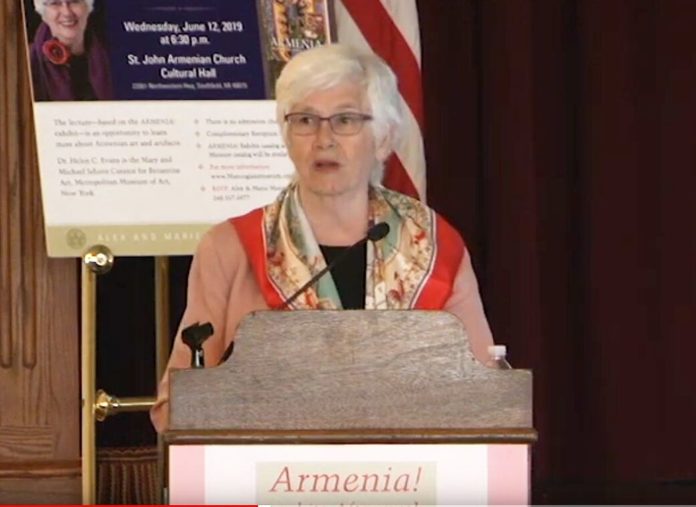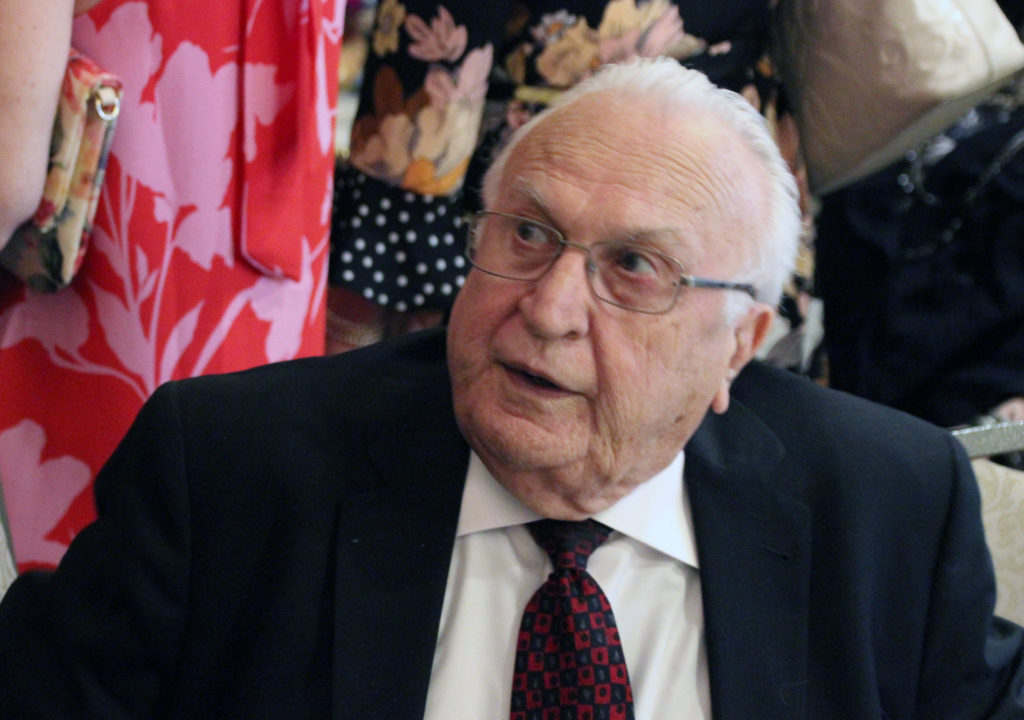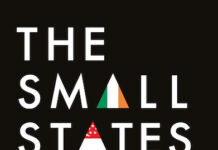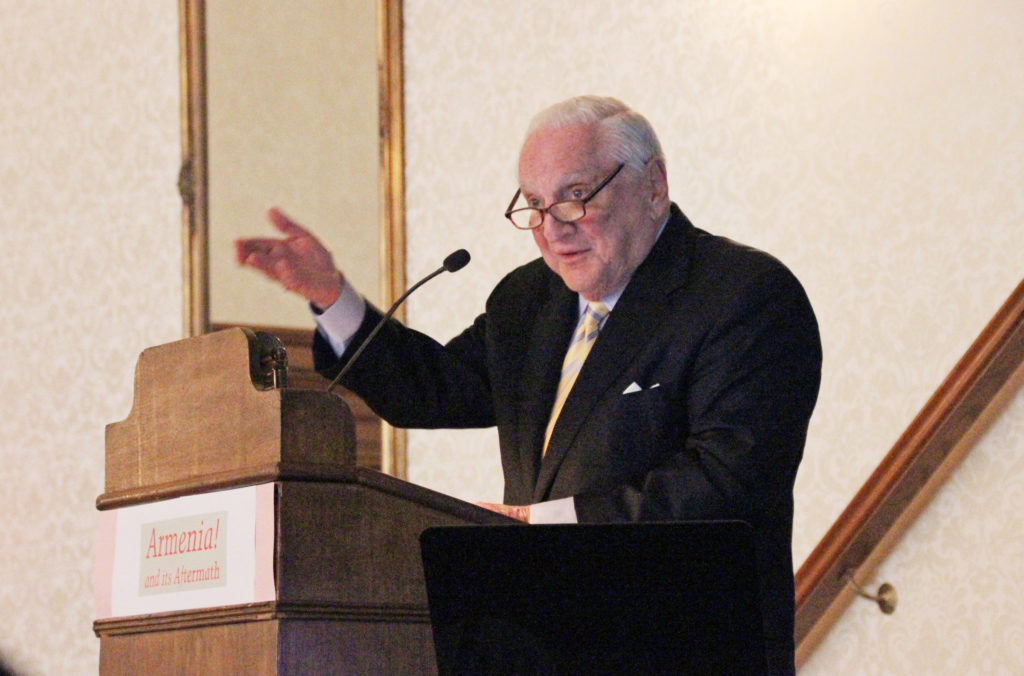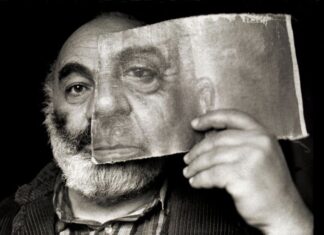By Alice Nigoghosian
SOUTHFIELD, Mich. — On June 12, the Alex and Marie Manoogian Museum and Richard Manoogian, chairman of the Board of the Armenian Apostolic Society, hosted a special event at the St. John Armenian Church Cultural Hall featuring Dr. Helen Evans, curator of the “Armenia! “exhibit at the Metropolitan Museum of Art, New York.
Elizabeth Brazilian, a member of the organizing committee for the event, was master of ceremonies for the evening and identified the committee members: “Lucy Ardash [Director of the Manoogian Museum], Edmond Azadian [Advisor to the Museum, author, and journalist], and Alice Nigoghosian [public relations and publishing consultant]; Mike Savitski [graphic designer and photographer]; and Steven Volk [videographer].”
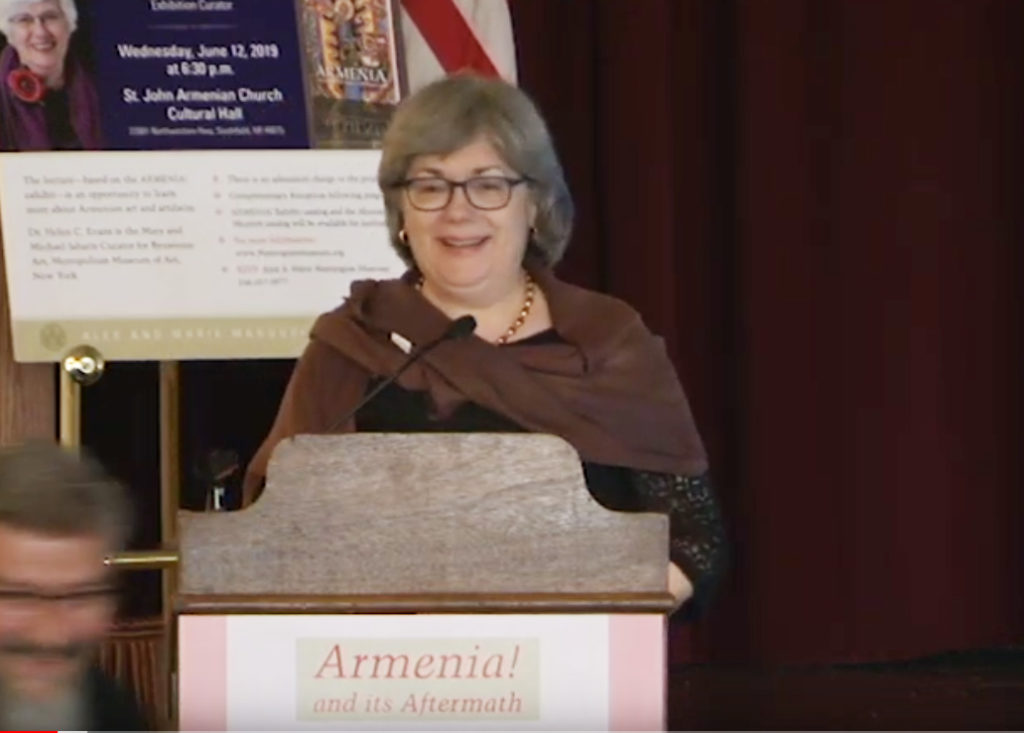
The Very Rev. Aren Jebejian welcomed everyone to the “The Holy Land” — recalling the expression he heard first from the late Dyana Kezelian when he first visited the Manoogian School. “Over the past three years I have come to know the true value and the legacy we have inherited in a place that we call ‘The Holy Land.’ Other than the Mother See of Holy Echmiadzin in our ancestral homeland, it is going to be difficult to find a sanctuary, a pre-K to 12 school, and an Armenian museum in one complex.”
The St. John Armenian Church complex includes the AGBU Alex and Marie Manoogian School, the Edward and Helen Mardigian Library, the Veterans Recreation Building, and the Alex and Marie Manoogian Museum.
Brazilian acknowledged the presence of special guests, including Detroit Institute of Arts Director Salvador Salort-Pons and his wife Alex May, Eugene A. Gargaro, Jr. [Chairman of the Board, Detroit Institute of Arts], Dr. Richard Marburger [President of the AGBU Manoogian School Board], members of the School Board, and the 2019 Fall Senior Class.



